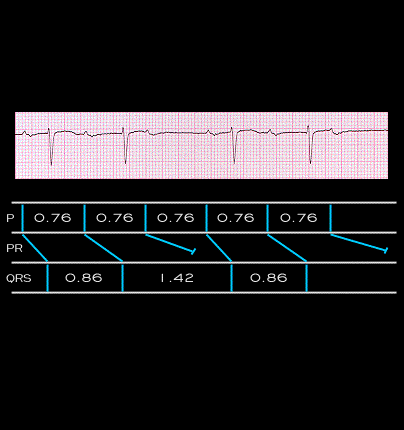
Digitalis may also cause more advanced degrees of AV block and these are regarded as manifestations of digitalis toxicity. The example shown here illustrates a distinctive form of AV block in which some, but not all of the P waves are conducted to the ventricle. This is referred to as 2nd degree AV block. In the example shown here and illustrated in the ladder diagram below the ECG, the PP interval is regular at 0.76 seconds ( atrial rate =79/min). The PR interval of the first P wave first is 0.24 seconds, the PR interval after the second P wave is 0.50 seconds and the third P wave is blocked. This 3:2 sequence is then repeated. This form of AV block, in which there is progressive lengthening of the PR interval culminating in a blocked P wave, is referred to as type 1 2nd degree AV block with Wenckebach periodicity and is discussed in grester detail in Chapter 8.
Digitalis may cause still higher degrees of AV block in which none of the P waves are conducted to the ventricles and an AV junctional or ideoventricular escape rhythm is present.
